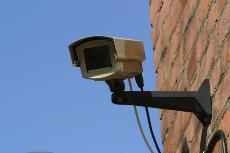Many power banks have same kind of design with their USB charging ports, Input ports and you basically know what to do with them. There are some power banks that are different though and by that that we mean some portable chargers have their own specialty with some being waterproof, having their own built-in cables or featuring certain charging technologies that are able to serve devices that use those kinds of charging technologies very well.
This is the RAVPower power bank that has a few unique aspects of its own since it has a built-in Lightning charging cable and uses a built-in AC adapter to recharge.
Power Capacity:
The power capacity of this RAVPower power bank starts at 9,000mAh and the conversion rate of the portable charger is actually quite bad. This is because it’s only able to charge most smartphones about 2.5 times and that leaves it at an Output power capacity of 5,000mAh.
So during charging you’re losing 4,000mAh and that’s a LOT of power being lost and the conversion rate in comparison to RAVPower’s other power banks is really bad and you can even take a look at Anker portable chargers to get an idea of what they offer as well. The modern standard of what a good conversion rate is usually 70% or higher and this power bank does a pretty bad job at that and actually gives you an Output power capacity of 5,000mAh.
This makes the versatility of the charger very restraining because it makes it really only usable for smartphones, and it can do 2 full charges at most for most smartphones. If you want to charge tablets like iPads, which would be a great thing to do if you’re using the built-in Lightning charging cable since it has a 2.4A charging speed, but it won’t make much of a good experience because of the low power capacity that’s actually useable.
Charging Mini sized tablets is going to make the most sense because you’ll at least get them to about 80% of a full charge using the entire power capacity of the power bank. However, charging Full-Sized ones will only take them to about 50% of the way through.
Overall, the power capacity isn’t what it says it is. By that, we mean that the power bank does indeed have a power capacity 9,000mAh but it does a bad job at converting that into power that you can actually use.
Lightning and Micro-USB Cable Variants
The main attraction and probably the main reason that you’re getting this power bank (like
GOAL ZERO YETI 400 SOLAR GENERATOR KIT )
is because of the Lightning charging cable that is inserted into the power bank, and this way you always have a reliable way to charge your Apple devices like your iPhone and iPad.
The built-In charging cable is perfect to use for Apple devices like your iPhone and iPad because it’ll charge them at max charging speeds. This because the Lightning cable is capable of Outputting 5V/2.4A. A Max standard charging rate.
The max charging speed starting at the iPhone 6 is 2 amps and the max charging speed of iPads is 2.4A. As a result, when you use the Built-In charging cable for either of those devices that we mentioned, you’ll be getting a max charging speed for them.
USB Output Port:
Free Range Charging is Available Too
There’s also a USB Output at the bottom of the power bank that can be used by any charging cable that you want to use, so if you want to charge your Android Micro-USB or USB-C compatible device, then this is where you can do it. However, you should know that the USB Output port is only capable of a speed of 5V/1.0A and that’s quite a slow charging speed for smartphone and tablets.
Overall, you can use the potential of both charging options because the Max Output of power bank is 3.4A.
Input Charging:
The power bank does not use a Micro-USB Input port to recharge itself like most power banks do, instead, there’s a built-in AC Adapter to recharge the power bank and all you have to do is just plug the AC Adapter into an AC Outlet and the power bank will begin to recharge.
However, we thought that the use of an AC Adapter to recharge the power bank would be a faster way to recharge it, but that’s not really the case since it recharges the RAVPower portable charger at 100-240V/0.3A and that’s basically like charging it at 1 Amp and as a result, you can expect a full recharge within 6 hours.
Structure and Material:
Even though the power bank is made of plastic, the overall build quality is really good because all of the things on it are able to be concealed.
The Lightning charging cable can be placed into the power bank, so can the retractable AC Adapter and the charging port can be covered by a covering flap. The paint is scratch resistant.
Tech:
It makes use of all the vital tech build qualities like using Short-Circuit and Overload Output protections and it will automatically shutdown once the power bank detects either of those things.
Reliability
This RAVPower power bank is very reliable for those that own Apple devices like iPhones or iPads. Since you’ll be able to charge you’re both of them at their at max charging speeds and best of all, the power bank has a built-in Lightning charging cable that you’ll always have with you.
For those that have Android devices, it’s best to get the Micro-USB variant of this power bank, which is basically the same thing but it has a built-in Micro-USB charging cable.





